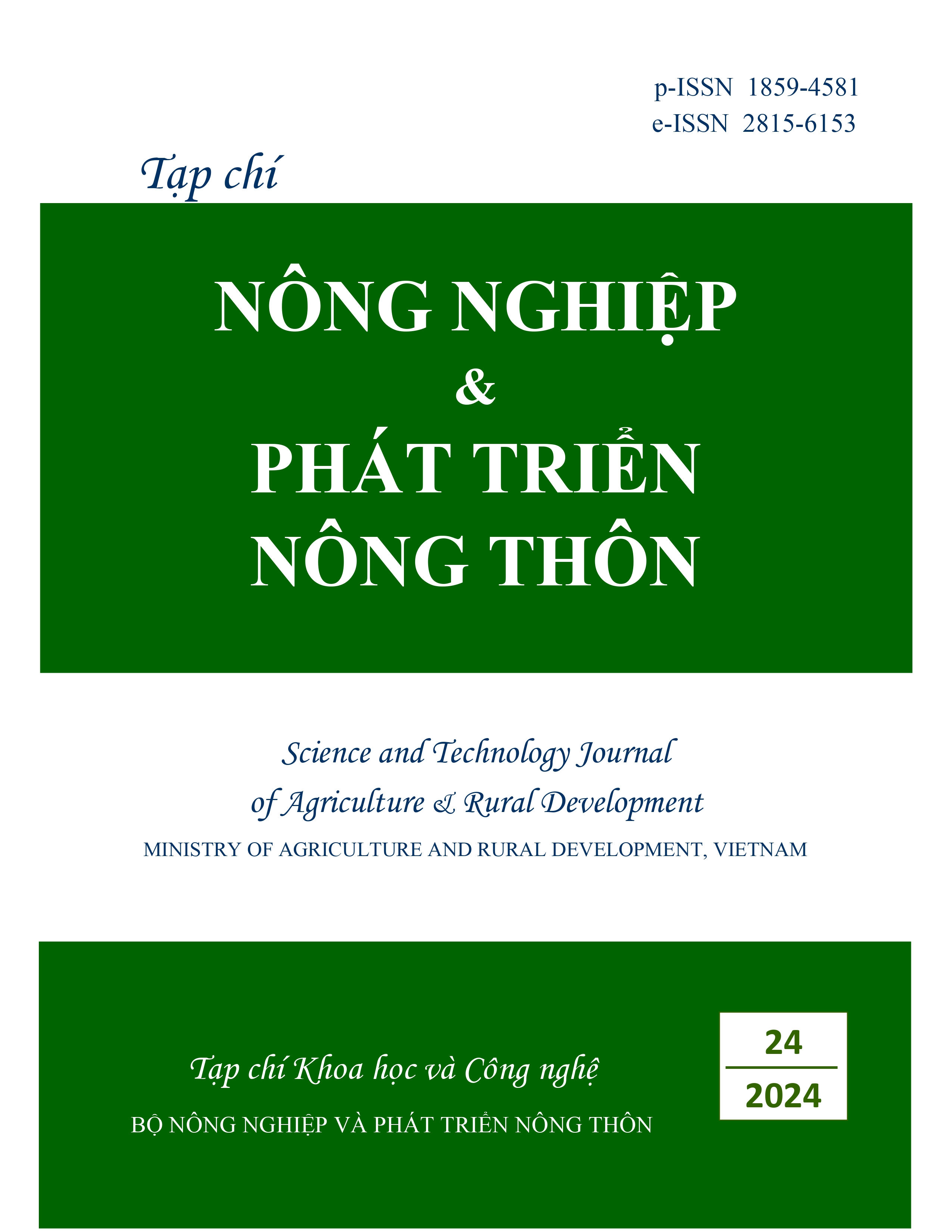Effect of stocking density on growth and survival rate of larvae of clam (Meretrix meretrix Linnaeus, 1758) from D-veliger to post metamorphosis stages
DOI:
https://doi.org/10.71254/e4eg4s46Keywords:
D-veliger, stocking density, Meretrix meretrix, clam, growth rate, survival rate, post-metemorphosisAbstract
The study aims to determine the effect of stocking density on the growth and survival rate of clam (Meretrix meretrix) larvae from the D-veliger stage to the post metamorphosis stage (crawled larvae). The experiment was conducted with 4 larvae stocking densities such as: 10 larvae/ml, 15 larvae/ml, 20 larvae/ml, and 25 larvae/ml in 12 120 L plastic tanks, each treatment was repeated 3 times. The experiment was carried out in 7 days in June 2024 at the Research Center for Aquaculture Breeding and Services in Thanh Hoa, located in Hoang Thanh commune, Hoang Hoa district, Thanh Hoa province. Research results show that clam larvae at 10 larvae/ml treatment had 202.3 ± 3.5 µm length and 5.3 ± 0.2%/day of specific growth rate (SGR) significantly higher than them reared at the densities of 20 and 25 larvae/ml (p < 0.05) but had not significant difference compared to larvae at density of 15 larvae/ml (193.7 ± 1.2 µm length and 4,7 ± 0,1%/day. The time for the larvae to reach the bottom at the densities of 10 and 15 larvae/ml tanks on day 4, while larvae reared at density of 20 larvae/ml on day 5 and 25 larvae/ml on day 6. The highest survival rate of clam larvae found at the stocking density of 10 larvae/ml (80.7 ± 0.1%), significant difference compared to these larvae at densities of 20 and 25 larvae/ml (p < 0.05), but had not significant difference with larvae at density of 15 larvae/ml (79.7 ± 0.2%). The results of experiment indicates that the stocking density of 15 larvae/ml was suitable for rearing clam larvae from D-veliger to post metamorphosis stage.






